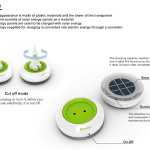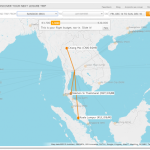boundaries between fans and presentation/music
How do fans interact
how to give power back
2 spaces – stage and audience space – existed since greek times
power of fan, power of audience
participatory culture
REM – SD 2003 – estab norms of space
fans determin the set list
bands control over the audience becomes complicated
audience organzied by another algo – profiles in range of clusters to go see who to go meet
discussion board going on thru sms
henry jenkins – aprticipatory cultuere
where there is no diff fro mthe fan and the band
hier of control breaking – artifacts of culture (Mp3s movies) and discourse (board, blogs) – never happened before
implications of media give more weght to what is being said
settled in their own hierarchies
author subj to the qual or representation in the internet age
onus of authoritative voice – ceases for content providers and now sits with the audience
fleetwood mac – end to end didnt listen to users
now – producers and consumers are a lot closer
headautomatica.com
diff between consume an dproduce has been reduced and the barriers are completely gone








